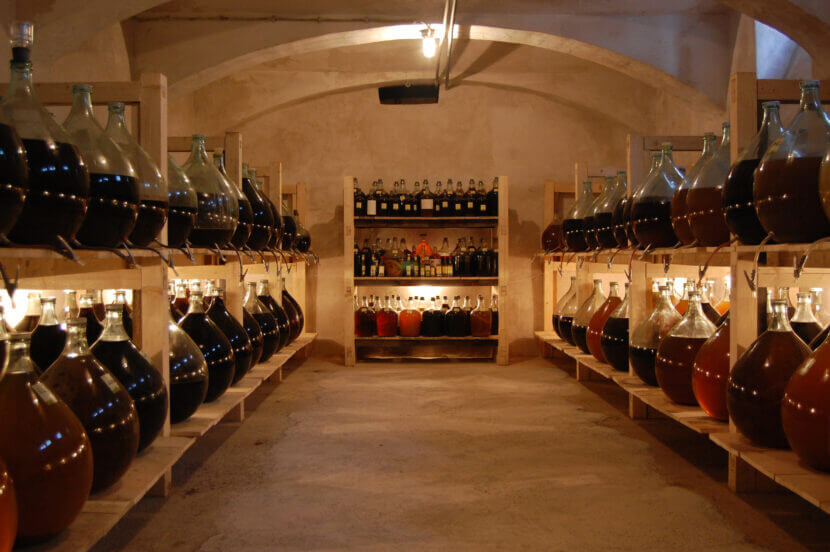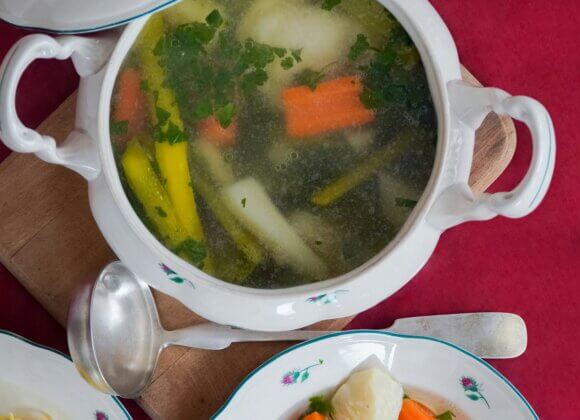It is an integral part of salad dressings, a freshness kick for many a dish and a permanent fixture in every kitchen: vinegar. Which classics you should have at home and which variety you can surprise your guests with is revealed to us by someone who is called the “Vinegar Pope” in this country for good reason – Erwin Gegenbauer.

Since the mid-1990s, the quality fanatic has been working on outstanding compositions in the family business, which are now available on four continents and have made him the most famous vinegar brewer in the world.
Here are his tips for stocking up on vinegar at home:
House vinegar noble sweet
It is Gegenbauer’s answer to the flood of balsamic vinegars that are flooding the supermarkets these days. And which he strongly advises against – if only because of his sense of quality. “The balsamic vinegar of today,” says Gegenbauer, “is nothing more than a chemical mixture of color and sugar couleur. There is no such thing as a thick balsamic vinegar.”
Gegenbauer therefore developed the sweet house vinegar out of love for the product and also with a bit of anger in his stomach. It is based on a grain spirit made from emmer and einkorn, which is fermented using the beechwood process. In other words: “We build a pyramid from the beech chips in a large wooden barrel, over which the mash slowly runs. The resulting bacteria convert the alcohol into acetic acid.”
Depending on the season, boiled fruit juices (blackcurrant, elderberry, etc.) are then responsible for the taste. Gegenbauer: “The house vinegar noble sweet is a real everyday vinegar that goes perfectly with any type of green salad.”
Riesling Auslese
If wine vinegar, then like this! Sweet wine serves as the base, with the secret being to preserve the residual sugar, which ensures full aromas and the perfect harmony of sweet and sour. “If you halve the acidity,” says Gegenbauer, “you also halve the flavor. That’s why we stop fermentation at six degrees to retain the residual sugar.
TIPS: For marinating raw fish, meat, fruit and vegetables for several days; for drizzling over fried fish or blanched vegetables; on blue cheese.
Currant vinegar
Its great fruitiness makes it particularly suitable for bitter salads – or as a refreshing drink spritzed with water. Here the currants are pressed, in the first fermentation into wine, in the second into vinegar.
Tomato vinegar
Grape tomatoes are not a vegetable, but a fruit – in other words, they contain sugar. They are pressed cold and gently, resulting in a yellow juice, which is fermented into vinegar under controlled fermentation.
TIPS: Excellent on raw fish and carpaccio, for Asian wok cuisine and rice dishes, for drizzling over blanched vegetables, on fresh goat’s cheese, carrot cake and ice cream. Indispensable on mozzarella with tomatoes or tomato salad.
Yuzu vinegar
Currently the favorite of Erwin Gegenbauer and his family: exotic, but versatile, “it even cuts a wonderful figure in an Aperol Spritz”. Like all Gegenbauer fruit vinegars, this one is fermented twice and its exotic citrus note gives it a refreshing yet complex flavor.

Plus: Vinegar as a beauty elixir
The health aspect of vinegar should not be neglected either, and apple cider vinegar in particular has a lot going for it: a glass of water with a splash of it stimulates the metabolism and saliva formation, making it easier to digest meals.
It is also used externally, for example for acne, not least because it has antibacterial properties. A diluted apple cider vinegar and water mixture can be used as a facial tonic. Thanks to its antifungal properties, apple cider vinegar can also help in the treatment of fungal infections on the skin.
Related posts:




![Home cooking reloaded incl. competition Christoph_Krauli_Held©Monika_Loeff_19285[1]](https://myhome.at/wp-content/uploads/2025/09/Christoph_Krauli_Held©Monika_Loeff_192851-580x420.jpg)








